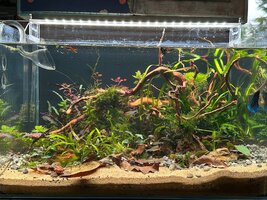MelodySalad
New Member
I'm wondering if I need to upgrade my filter. I opted for an Oase FiltoSmart Thermo 100 for my 90L tank but now think even though it's meant to be suitable for up to 100L tanks I don't think it's big enough! I abandoned the heater early on as it wasn't getting above 22 despite being maxed out on 32. I filled the space with the left over ceramic hola hoops it came with. I've subsequently added the hola hoops from the Fluval Flex 32L which I've decided to sell as trying to manage two tanks is really too much for me at the moment. I'd like to start using entry level CO2 which is another reason I think I will need to go for a bigger filter. Any advice hugely welcomed!



